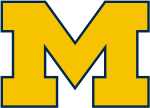Weisman Art Museum
1934 establishments in MinnesotaArt museums and galleries in MinnesotaArt museums established in 1934Art museums established in 1993Contemporary crafts museums in the United States ... and 8 more
DeconstructivismExpressionist architectureFrank Gehry buildingsModern art museums in the United StatesMuseums in MinneapolisPostmodern architecture in the United StatesUniversity museums in MinnesotaUniversity of Minnesota

The Frederick R. Weisman Art Museum is an art museum at the University of Minnesota in Minneapolis, Minnesota. Founded in 1934 as University Gallery, the museum was originally housed in an upper floor of the University's Northrop Auditorium. In 1993, the museum moved to its current building, designed by the Canadian-born American architect Frank Gehry, and renamed in honor of art collector and philanthropist Frederick R. Weisman. Widely known as a "modern art museum," its 20,000+ acquisitions include large collections of Marsden Hartley, Alfred Maurer, Charles Biederman, Native American Mimbres pottery, and traditional Korean furniture.
Excerpt from the Wikipedia article Weisman Art Museum (License: CC BY-SA 3.0, Authors, Images).Weisman Art Museum
East River Parkway, Minneapolis
Geographical coordinates (GPS) Address Nearby Places Show on map
Geographical coordinates (GPS)
| Latitude | Longitude |
|---|---|
| N 44.972777777778 ° | E -93.238055555556 ° |
Address
Weisman Art Museum
East River Parkway
55455 Minneapolis
Minnesota, United States
Open on Google Maps









